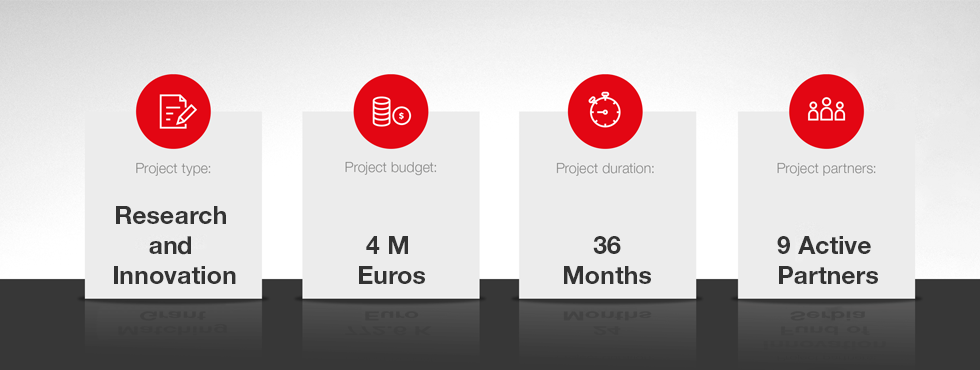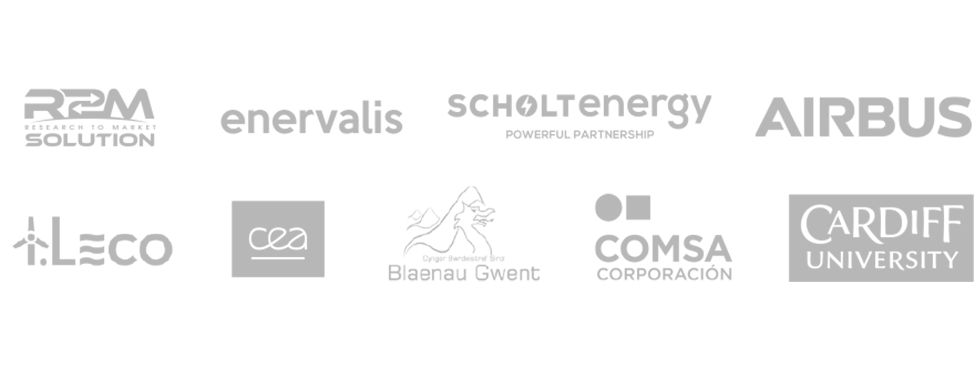DRIvE
Project Objectives
Addressing call topic area 3 (DR Technologies), DRIvE links together cutting-edge science in Multi-Agent Systems (MAS), forecasting and cyber security with emerging innovative SMEs making first market penetration in EU DR markets. In doing so, near market solutions are strengthened with lower TRL, higher risk functionalities that support a vision of an “internet of energy” and “collaborative energy network.” From the research side, MAS will move closer to real time operations and progress from a limited number of assets toward decentralized management of a larger number of assets providing DR services to prosumers, grid stakeholders and DSOs. The research will deliver a fully-integrated, interoperable and secure DR Management Platform for Aggregators with advanced hybrid forecasting, optimization, fast-response capabilities and enhanced user participation components in a standard-compliant (Open ADR) market-regulated (USEF) manner, empowering a true cost-effective mass-market (100’s millions of heterogenous assets). The project features 5 pilots across 3 countries consisting of a stadium, wind farm, 7-floor office, tertiary & residential buildings within medium-large districts, resulting in over 25 MW of potential flexible capacity. Direct engagement of 100 households and 2 tertiary buildings (over 1,000 persons) is attained and replication to over 75,000 persons is possible. The pilots will be running in real DSO environment with real engagement of grid players. Overall, DRIvE will make available average 20% of load in residential and tertiary buildings for use in DR, resulting in up to 30% cost-saving (price-based DR) and also maximizing revenue for prosumers (incentive-based DR). DRIvE will also allow a minimum 25% increase of renewable hosting capacity (distribution grid) and up to 30% of overall reduction of CAPEX and OPEX costs for DSOs.

Typhoon’s role as a project partner
Typhoon HIL was the leader of validation and verification work package, where the task was to develop an automated cloud-based solution for integration for validating, verifying and demonstrating the DR Management Platform, i.e. the core of the project. The verification and validation solution was also enhanced with automatic report generation and test-run data visualization. In order to build this setup, Typhoon HIL integrated a sandboxed instance of the DR Management Platform which used real gateways (hardware-in-the-loop methodology) to control digital twins of 5 pilot site. The digital twins were developed from scratch by Typhoon HIL’s modeling team and validated against historical data of actual, physical sites. These twins ran on a large setup of 8 Typhoon HIL’s emulators interfaced to 44 ABB home gateways. ENERVALIS and i.LECO deployed sandboxed (mirrored) versions of their production cloud services which were interfaced with models of individual buildings and assets via these real gateways. This setup was used by i.LECO and ENERVALIS for general verification and validation activities in scenarios such as kW max, time-of-use optimization, portfolio management, congestion management, frequency restoration and frequency containment, but it was used for small-scale, focused validation activities such as MODBUS register debugging.
Testing sites
- Bleanau Gwent district: this pilot site consisted of the Learning Zone (a further education college building), General Office, Gwent Records Archive, a secondary school, a sports centre, a multi-storey car park, the energy centre and a cableway linking the Works site to Ebbw Vale town centre). This site was used for data collection and simulation of different DR programmes.
- DEVO district (Netherlands): Duurzame Energievoorziening Veenendaal-oost B.V. (DEVO), a local energy supplier, which is responsible for the construction, operation and management of sustainable energy: provides 1,250 homes and buildings heating and cooling through a collective energy-based heat/cold storage and cogeneration. The site provide DR services thanks to its controllable hot water boiler.
- Giessenwind wind farm (Netherlands): one of the highest wind farms in the Netherlands and the first wind farm in the Benelux with a utility energy storage system. The site produces 16.9 million kWh of electricity per year and provides energy for 5,000 households in the Netherlands. The combination of wind turbines and storage system enables the wind farm to provide both power quality and balancing services to the DSO/BRP.
- ADO Stadium (Netherlands): Cars Jeans stadium is the home stadium of ADO Den Haag. On the roof of this stadium are solar panels installed, an energy storage system is being installed and there are 30 EV charging points at the stadium. The site was used for DR services such as FCR and FRR.
- COMSA head office (Spain): The COMSA Industrial head office in the city centre of Barcelona is a fully-electrical building with a total area of over 2,600 m2 across 7 floors. The building is equipped with heat, ventilation and air conditioning (HVAC) connected to an energy management system, which was used for DR purposes and was controlled by MPC.
- WOERDEN District (Netherlands): the pilot site consisted of 39 houses which underwent deep-renovation to become net-zero-energy using an industrialized and modular approach that allowed renovation to take place within 10 days. Thanks to renovation, energy consumption was reduced by 40% and energy modules were installed to provide efficient heating and ventilation. Energy is generated with 8-9kWp of PV and there was a district battery, together with several house batteries. In the project, smart DR control was deployed to increase self-consumption and improve energy efficiency: this was done by coordinating energy flows on neighborhood level – based on interaction with the DSO – so that flexibility could be deployed to avoid congestion and avoid high-cost grid reinforcement.
Field of science
Artificial Intelligence, Renewable Energy, Electric Power Generation, Commerce (Secure, clean and efficient energy; A single, smart European electricity grid; Integrated local energy systems (Energy islands)), Demand Response (DR), lifecycle, CAPEX and OPEX reduction, portfolio management, congestion management, ancillary services, forecasting, energy trading, flexibility market, cybersecurity, cyber protection, Microgrids, Test Automation, Behavioural Models, Digital Twin, MBSE.
Partners
